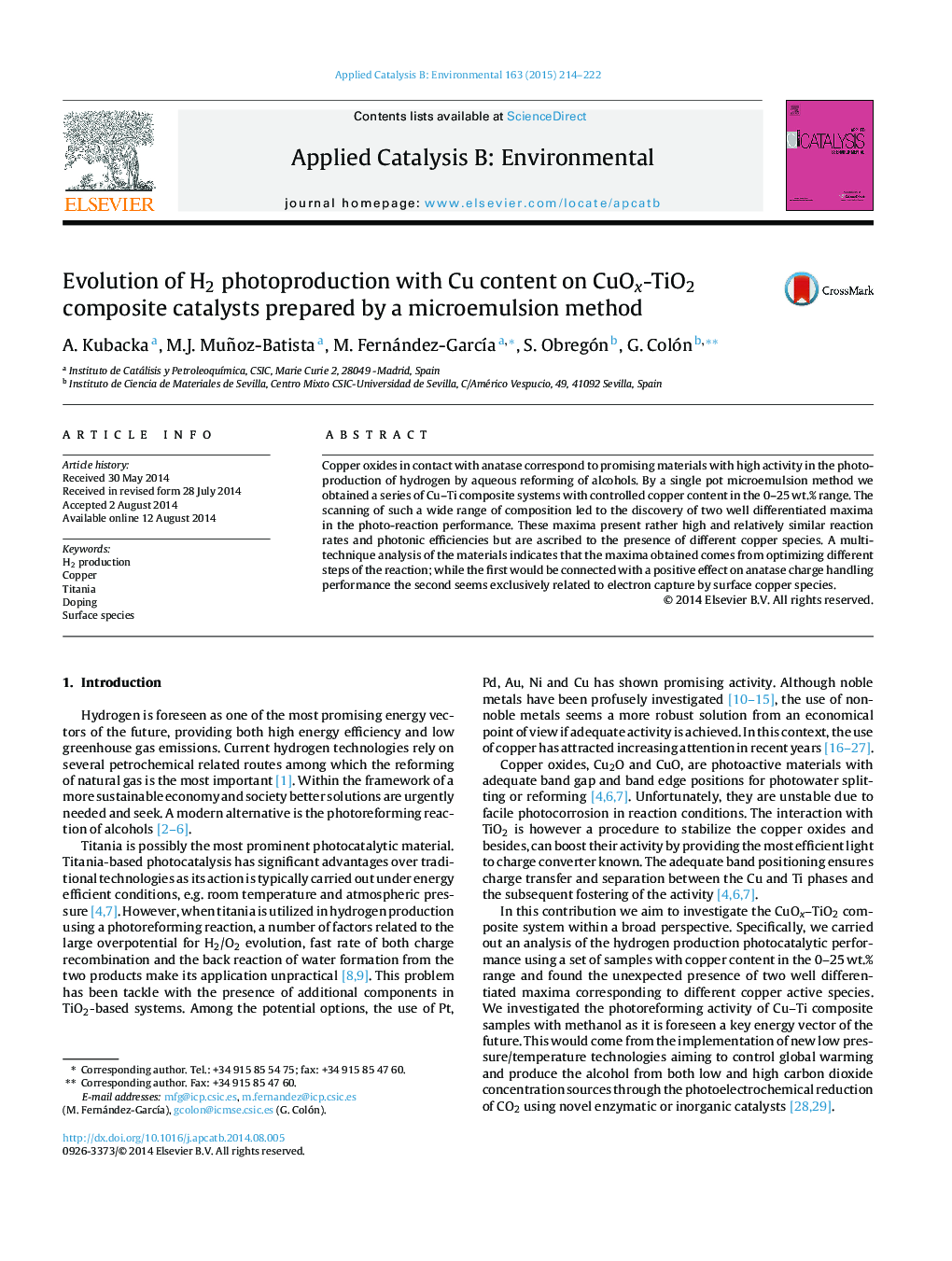| Article ID | Journal | Published Year | Pages | File Type |
|---|---|---|---|---|
| 44873 | Applied Catalysis B: Environmental | 2015 | 9 Pages |
•CuOx-TiO2 photocatalysts are prepared by a single pot microemulsion method.•Two maxima vs. copper content are encountered in the photo-production of hydrogen.•These maxima correspond to different copper species.•Intensification of the Cu–Ti system may be approached by two independent pathways.
Copper oxides in contact with anatase correspond to promising materials with high activity in the photoproduction of hydrogen by aqueous reforming of alcohols. By a single pot microemulsion method we obtained a series of Cu–Ti composite systems with controlled copper content in the 0–25 wt.% range. The scanning of such a wide range of composition led to the discovery of two well differentiated maxima in the photo-reaction performance. These maxima present rather high and relatively similar reaction rates and photonic efficiencies but are ascribed to the presence of different copper species. A multitechnique analysis of the materials indicates that the maxima obtained comes from optimizing different steps of the reaction; while the first would be connected with a positive effect on anatase charge handling performance the second seems exclusively related to electron capture by surface copper species.
Graphical abstractFigure optionsDownload full-size imageDownload as PowerPoint slide
